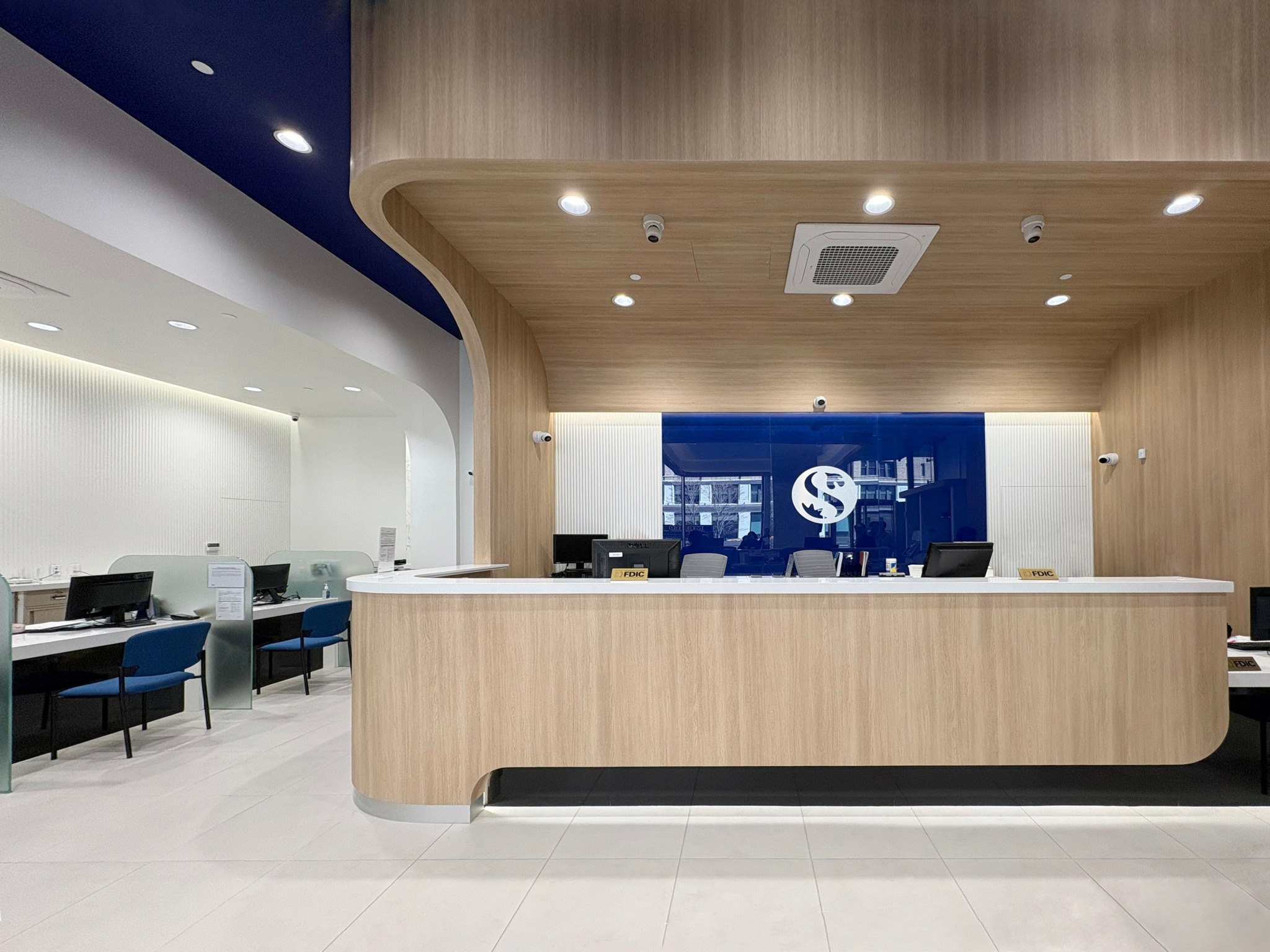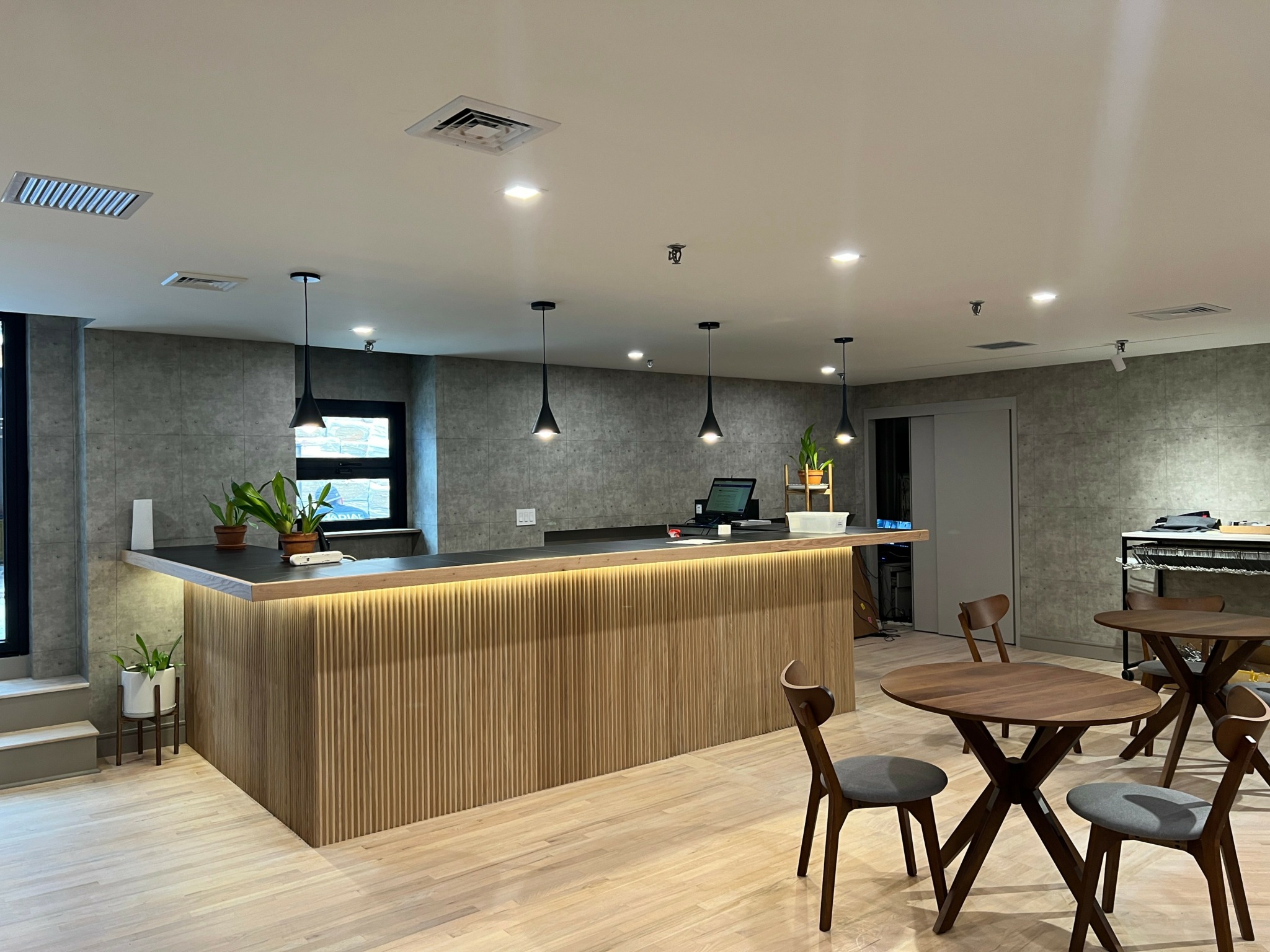We’re excited to introduce you to the always interesting and insightful Haeun Mun. We hope you’ll enjoy our conversation with haeun below.
Haeun, looking forward to hearing all of your stories today. Earning a full time living from one’s creative career can be incredibly difficult. Have you been able to do so and if so, can you share some of the key parts of your journey and any important advice or lessons that might help creatives who haven’t been able to yet?
I worked as a spatial designer, developing my creative career while supporting myself, with the goal of one day leading my own projects. Early in my career, most of my work focused on cost estimation, paperwork, and technical tasks, leaving little room for creativity. The turning point came when I began participating directly in interior design projects for offices, supermarkets, and banks, which gave me the confidence to see my ideas realized in real spaces. At the same time, observing and studying various spaces across New York helped me clarify and expand my creative vision.
My journey was gradual, as I balanced practical construction work with creative exploration. Growing as a designer who understood the construction process allowed me to implement my intentions effectively within real-world constraints, while also learning how design ideas connected with budgets, schedules, and execution. I came to consider this understanding just as important as creativity itself.
Through these experiences, I realized that creativity was not just about generating ideas—it was about transforming them into meaningful and functional spaces that enhanced people’s experiences. This understanding guided my approach and inspired me to push the boundaries of spatial design.
Throughout my recent projects, I had the opportunity to lead concept development and material selection for several interior spaces. In one corporate office project, for instance, I designed a layout that improved both spatial efficiency and user comfort, which was well received by clients and team members alike. These experiences strengthened my confidence in turning creative concepts into tangible outcomes.

Haeun, before we move on to more of these sorts of questions, can you take some time to bring our readers up to speed on you and what you do?
I worked as a spatial designer and project manager, building my creative career in spatial design. I studied architecture, which really sparked my interest and understanding of how spaces are composed. After completing internships at architecture firms and spatial branding companies in Korea, I moved to New York and started working at an interior design and construction company. That role gave me my first hands-on experience turning design ideas into real, built projects.
Most of the work I did focused on commercial spaces, offices, banks, and retail stores. My focus was always on creating spaces that were both efficient and visually engaging, while matching the client’s needs, budget, and schedule. One project that really stands out is the 475 Shinhan Bank project.
For that project, I started by analyzing how both customers and staff would move through the space. I arranged visual elements, lounge areas, and product displays so that customers would naturally encounter the brand experience. Staff circulation was separated from customer areas, with vaults, storage rooms, consultation rooms, and staff lounges efficiently organized, and safety measures were incorporated. I also used the 13-foot high ceilings, rounded frames, and warm wood finishes to make the bank feel welcoming and comfortable, rather than rigid or formal.
After the bank opened, the feedback from both staff and customers confirmed that the space felt inviting. The high ceilings and warm wood finishes helped create a positive impression, which was really rewarding to hear.
I also worked on retail interior projects focused on brand experience, which gave me the chance to showcase my creative vision. These projects allowed me to help clients solve practical spatial challenges while also conveying their brand message and creating meaningful experiences for their customers.
What set me apart from other designers was my experience in project management. It helped me understand how design ideas connect with budgets, schedules, and construction, and allowed me to apply that knowledge effectively. I also always looked at spaces from the user’s perspective, designing environments that naturally guide behavior and enhance the overall experience.
The achievement I’m most proud of is seeing my design ideas come to life in both commercial projects and portfolio work, turning brand experiences into real, physical spaces. What I want potential clients to know is that I don’t just create beautiful spaces—I make sure their goals and brand identity are fully reflected in the spaces I design. Every space is designed with a purpose, and I focus on realizing that purpose to guide behavior and create strategic, meaningful environments.

Is there mission driving your creative journey?
Creativity, for me, isn’t just about making something out of nothing. It’s really about understanding what people actually need in the spaces they use, and transforming those spaces into environments that are both functional and meaningful.
I’ve worked as a spatial designer and project manager on projects like the Shinhan Bank Manhattan branch, the 1270 facade renovation, the 1188 Supermarket project, and several office spaces. The 1188 Supermarket project, in particular, involved expanding an existing store in the commercial center of Flatbush, Brooklyn. The goal was clear: customers needed to easily see and access the products. So, I organized the products by category along circulation paths, and also created an overall clean and modern atmosphere, making the space feel trustworthy and comfortable. Through this project, I was able to solve practical challenges like workflow and circulation, while also realizing my design vision.
What drives me is the desire to translate a brand’s identity into physical space, and to communicate the intent of that space to its users—shaping how they experience it. For example, in 1270 retail projects, I focus on how layouts, materials, and lighting convey the brand concept and improve the overall customer experience. By doing this, I can guide user behavior, reinforce the brand’s image, and at the same time create spaces that are both comfortable and functional for everyone who uses them.
I also enjoy finding underutilized or vacant spaces and imagining new purposes for them, and I hope to work on more projects like that in the future.
Through all these experiences, my mission has become really clear to me: simply creating visually appealing spaces is not enough. I aim to design environments that are meaningful and impactful in everyday life. By combining creativity with practical execution, I strive to enhance the quality of life and experience for everyone who interacts with the spaces I design.

What’s the most rewarding aspect of being a creative in your experience?
The most rewarding part of my work as a creative is seeing people actually use and experience the spaces I design. Watching them explore and engage with a space as I intended is incredibly fulfilling. It becomes even more meaningful when a space successfully conveys a brand’s story or purpose, allowing people to experience and internalize its essence through their actions. Simply put, the greatest satisfaction comes when my design truly resonates with people. When they experience a space’s concept—whether consciously or unconsciously—it’s immensely gratifying to see my intentions come to life.
I also find great joy in seeing client satisfaction. While designing spaces ultimately serves a business purpose, it’s extremely rewarding to know that my design and efforts have contributed to achieving that goal. For instance, when a café I designed thrives, a restaurant has long lines, or a supermarket sees increased traffic and sales, the positive feedback from these projects is deeply satisfying.
Specifically, for the 1188 Supermarket project, after the store’s expansion and renovation, overall sales increased by over 30%, double the initial target of 15%. The client was extremely pleased with this outcome. Similarly, for a bank project in Queens, the original space was outdated and received complaints. After relocating and renovating the branch, accessibility and the work environment improved significantly, resulting in more visits from both staff and customers, according to the client’s feedback.
Ultimately, what makes this work truly meaningful is knowing that the spaces I design do more than just look good. They enrich daily life, guide behavior, reinforce brand identity, and leave a lasting impression on everyone who experiences them.

Image Credits
Image courtesy of Nextcom


